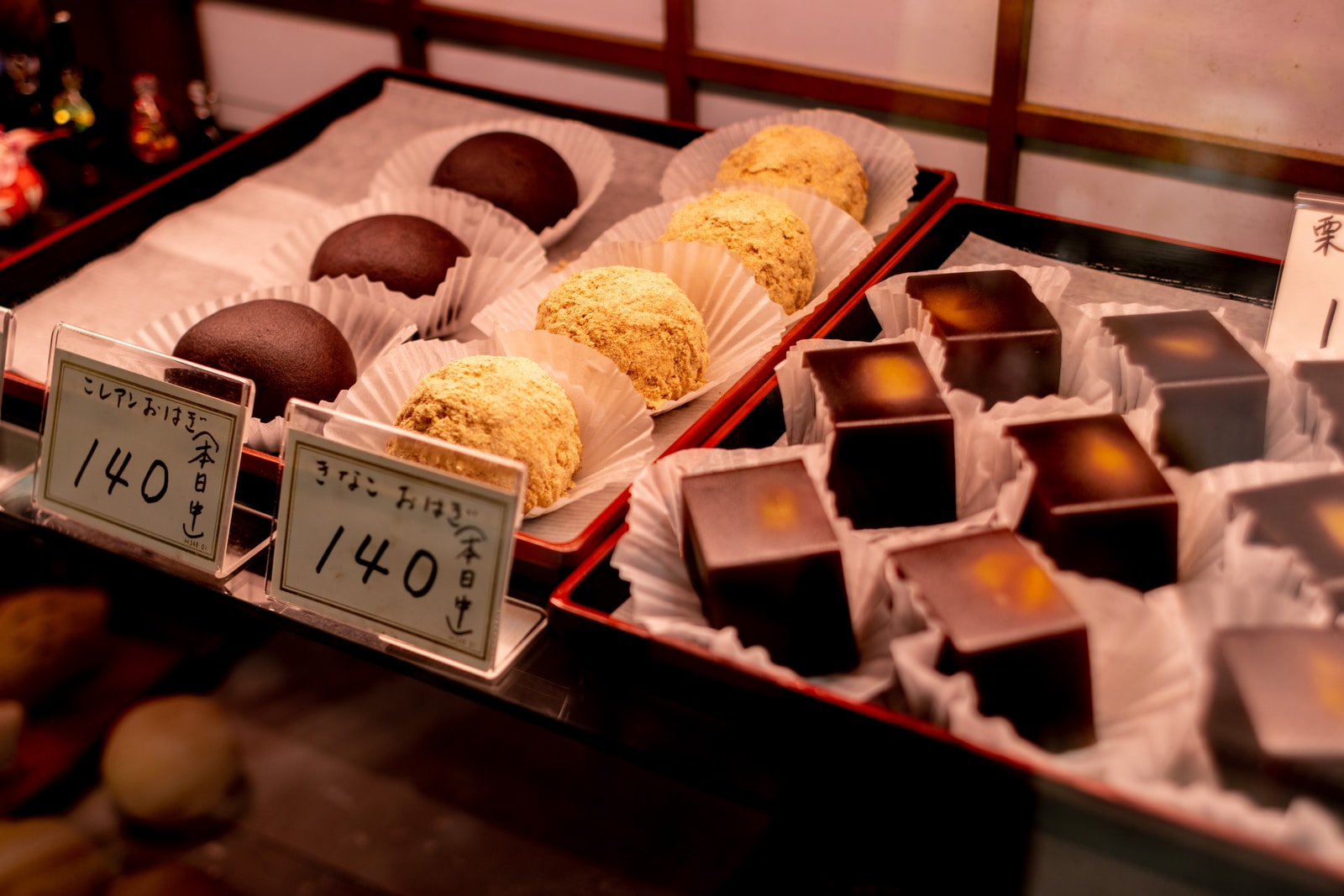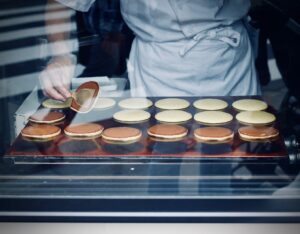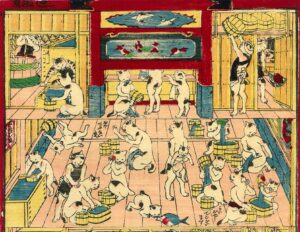10 of the Most Heavenly Places in Tokyo for the Sweet Tooth

Many Japanese are obsessed with sweets. If you happen to have watched the Netflix series, Saboriman Ametani Kantarou, based on a Japanese Manga story, it provides you just a glimpse of the population’s passion for desserts. On this show, you can see there are so many glamorized visual presentations of desserts in Japan. It is not surprising to see a man like Kantaro enjoying sweets alone at a cafe. From children to senior citizens, everyone loves to enjoy sweets. Western-style sweets were first introduced to Japan in the Meiji civilization and enlightenment period (1868 to 1912). During this era, coffee shops flourished and people ate Western-style sweets while drinking coffee. Many shops still carry apple pies, sponge cakes, and cream puffs. The Shiseido Parlor, located in Ginza, is known as the pioneer of Western-inspired Japanese stores in Japan. It continues to capture the atmosphere of the traditional cafe and the sweets culture of that past era.
In contrast to the western sweets, the traditional Japanese confectionery, called Wagashi, has its roots in the Jomon period (ca. 10500–ca. 300 BC). The very first Japanese sweets were made by grinding nuts, removing the acidity with water, and then rolling the nuts into balls. Not your typical sweetened dessert! Since then, wagashi evolved, influenced by interactions with the Tang Dynasty (present-day China), as well as the development of the Japanese tea ceremony culture. In tea ceremonies, wagashi is essential to accompany and complement the bitter taste of Matcha tea. The traditional sweets continue to be loved and deeply connected to the modern culture of Japan.
Like other Asian countries, Japan’s culture is a mixture of Eastern and Western influences. Thus, the Japanese interpretation of many of the Western sweets is unique in both taste and appearance. Deciding on where to go for your sugar fix while in Tokyo is just as hard as deciding on which restaurants to visit or which bar to enjoy before leaving the city. It takes quite a bit of time to taste your way through all the cakes and wagashi to find the very best this city has to offer. Each store has its own sweet specialties. Therefore, finding the very best sundae may not be the same place to have the very best red bean dessert. Discovering that particular sweets store in Tokyo for that signature special treat is indeed an obsessive journey! However, after endlessly indulging in everything sweet in Japan over many years, we now know exactly where to go to satisfy our never-ending dessert cravings.
A Long-established Sweet Shop – Hatsune, Nihonbashi District
Earthquakes have always been a part of Japan, and with urbanization, old buildings are being demolished and new ones are being built. Thus, it makes it extremely rare to find a long-established store, founded during the Edo period, like Hatsune, that has been in business at the very same place. Things to order there are matcha shaved ice with white rice cake balls, and Anmitsu (made by sweet bean paste & agar cubes). The bittersweet green tea shaved ice and the soft white balls have an exquisite texture that is very appetizing. The rice cake in the anmitsu, named Gyuhi, is a silky soft texture and has an elegant sweetness. If you want a traditional Japanese sweet, this is the place to go.
A Sweet Shop Specializing in Take-out – Sagamiya, Akasaka District

Since its establishment in 1895, Sagamiya has been making agar by hand in small batches using the same method handed down from generation to generation. The store’s famous Anmitsu is good, but the one dessert to try is Mame Kan (bean & jelly). It is a very simple dish with only agar, honey, and beans, you can taste the simplicity and natural flavors of this sweet. The Japanese agar called Kanten has been attracting attention as a diet food in Japan, not only because of its texture and flavor, for its high-quality minerals and dietary fiber.
For Bean Lovers – Umemura, Asakusa District
In Asakusa, a neighborhood full of long-established shops, there is a famous but rather inconspicuous store called Umemura. You could easily pass by it if you didn’t know the store existed. On weekends and holidays, customers come from all over the country to line up at this store. The best thing to eat here is Mame kanten. While the previously mentioned, Sagamiya’s Mamekan specializes in agar, Umemura is more obsessed with beans. The red kidney beans are cooked to a unique plumpness, shining black with honey. The minimalistic visual is part of the true taste of Zen. The beans are so fluffy and tender that they gradually dissolve on your tongue. Available for take-out.
Enjoy the Essence of Japanese Sweets – Kinozen, Kagurazaka District
Kagurazaka, the district where the Kinozen store is located, is known as the old geisha town. This district captures the luxurious traditional Japanese charm and possesses a great deal of quiet ambiance. Going down an alley will reveal the influence from historical Edo. Today, Kinosen is famous for traditional Japanese sweets. It was formerly a sushi restaurant when it first opened before World War II, but it became a sweet shop in 1948 to keep up with the changing times. Popular menu items include green tea Bavarian Mousse cake, Anmitsu, and sweet porridge named Shiruko. The thick Bavarian cream tastes like rich matcha custard.
Sweets at a High-Quality Fruiterer – Sembikiya, Ginza District
Named “Fruits Restaurant” by the founder, the store was established more than 100 years ago and is so widely known among gourmet Japanese people that they call it the Fruit Museum. The signature item on the menu is the Ginza Parfait made with high-quality seasonal fruits. In the kitchen, visible from inside the cafe, seasonal fruits are delicately cut and formed into lovely parfaits by the pastry professionals. The fruit sandwich, a unique Japanese sandwich filled with fresh, juicy fruit and whipped cream, is a popular souvenir.
Pudding Meets Fruits – Nishimura Fruit, Shibuya District
There are many pudding specialty stores in Japan, and many sweet stores that have pudding as their signature dish. The reason for the popularity of pudding is that many people have eaten it since childhood. They are familiar with it because it is easy to make at home. Pudding is also available everywhere like convenience stores and supermarkets and is on the menu at cafes and sweet stores. The shape, size, consistency, serving style, and even the containers are unique to each store.
Established in 1910 as a high-end fruit store, Nishimura Fruits is located right next to the famous scramble crossing, which has become a tourist attraction in Shibuya.
Nishimura Fruit is also famous for its pudding à la mode. It is a pudding dessert consisting of custard pudding as the centerpiece, decorated with various seasonal fruits & whipped cream. The pudding à la mode is a favorite for the Japanese, who grew up eating both pudding and fruits together. The bitterness of caramel pudding with the flavor of fruits and fresh cream continues to be timeless treat at Nishimura.

Load Up on the Fruits – Reibell, Various Locations
A sumptuous treat for fruit lovers, Reibell proudly serves parfaits with 80% fruit and 20% whipped cream. The owner has been buying the best seasonal fruits of the day at the market every morning for fifty years. He serves a variety of parfaits using large quantities of fresh fruits in each, such as two whole peaches in the summer, one & a half mangoes during all seasons, and 20 or so strawberries. There are many branches in Shibuya, Shinjuku, and Tokyo Station.

Enjoy Fashionable Shaved Ice – Kooriya-Peace, Kichijoji District
Tokyo is crowded with a wide variety of shaved ice, from long-established stores to luxury hotel lounges. There are also Taiwanese shaved ice which is inspired by Chinese medicine, and Korean shaved ice with lots of toppings on fluffy ice. Peace is a store that specializes in shaved ice with homemade syrups made from seasonal fruits. They often purchase the fruits directly from the local farmers. The fresh fruits, cut into large pieces, work so well with the texture of the ice, which is refreshing and light.
A Joyful Celebration of Tradition – Takeno to Ohagi, Meguro District
Ohagi is a kind of sticky rice cake made with sweet bean paste. Besides regular ohagi offerings, this store also has novel flavors such as beets, pumpkin & baked apple, and Yuzu citrus & coconut. There are other unique options on sale each day depending on what the owner decides to make in the morning. The owner says his grandmother used to make ohagi with a particularly refined taste. That memory is what inspired him to start his own business specializing in traditional treats. Everything made in the morning is sold throughout the afternoon, and the store closes once they are sold out.
Chestnut Confectionery – Waguriya, Yanaka District
This store specializes in Japanese chestnuts sweets. Creations such as Mont-Blanc cakes to puff pastries are filled with chestnut cream, and the wagashi is made with this sweet nut. The Mont-Blancs are creamy with a distinctly earthy, slightly sweet taste of chestnuts that the shop exclusively grows and harvests at their own farm. As you take a bite, one serving of it can satisfy both your sweet tooth and your soul.







 Instagram
Instagram